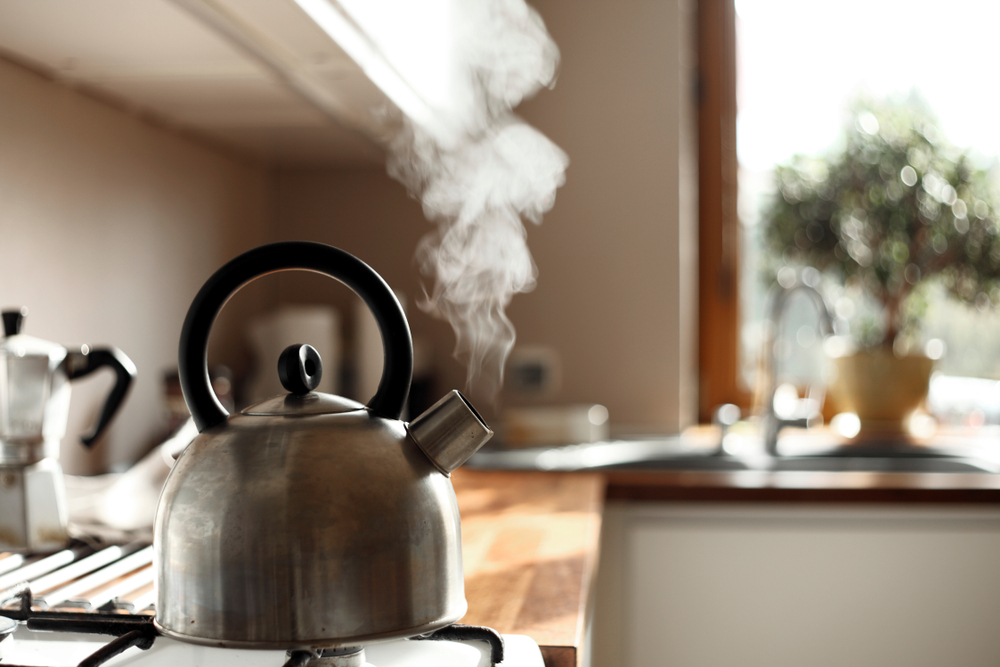
When cooking, washing up or even simpler tasks like making a cup of tea, many kitchen appliances will create steam and therefore, condensation. But how does this affect your kitchen?
Condensation is expected in a kitchen. But if not managed properly, build-up of condensation in your kitchen can lead to peeling paint, damp cupboards and even mould around your windows. Before the damage becomes too costly learn from our tips to stop condensation in your kitchen.
What Causes Condensation in a Kitchen?
There are many reasons that can cause condensation to occur inside your home. Lack of adequate ventilation is the most recognised issue, but condensation is more common than you may think.
Some of the main causes of condensation also include:
- Colder, or irregular, temperatures
- Lots of steam being produced, either through cooking or washing
- Poor ventilation, whether an extractor fan or windows
- High humidity, whether atmospheric or indoors
- Air drying clothes indoors regularly
When Does Condensation Happen?
Condensation forms when the air is cooled to what is known as the “dew point”. This describes a temperature where water droplets form on cool surfaces.
For example, if you exhale in the cold, the heat from your breath meets the cooler outside air and becomes visible. This is because the dew point is reached. If you think about this but on a kitchen wall, when the hot air meets a much colder surface such as a window or cupboard, it becomes condensation.
How Can You Prevent Condensation in the Kitchen?
There’s a combination of both lifestyle and design changes you can make to help reduce condensation in your kitchen. Try these expert tips to reduce or manage condensation around your kitchen.
1. Boil Your Kettle Near a Window or Plan for Better Ventilation
Rather than boiling your kettle under a cupboard, which is a common and costly mistake, try boiling it near an open window or under an extraction fan. This will ensure the boiling water leaves the room, rather than becoming trapped as steam, which can damage cupboards or other furniture items.
If you have repeatedly boiled your kettle under a cupboard, it’s worth checking for a build-up of damp or other dirt, and thoroughly cleaning afterwards. If your cupboards are painted or plastic coated, then you may want to strip it off and to ensure there are no mould spores growing under the paint.
You can add a mould preventative to your paint or coat the underside of the cupboard with a mould additive to ensure that any residual damp isn’t carried over. You should aim to balance between both preventative tips and practical ones, like planning for better ventilation.
2. Consistent Temperature
If your home’s temperature is inconsistent, then you should be alert of condensation. Rooms where the temperature doesn’t stay consistent for long, such as a kitchen, will more likely be affected by damp, moisture or condensation.
Homes without proper insulation are more at risk, too. The contrast of outdoor and indoor temperatures can create residual damp, forming as condensation on cooler surfaces, like walls, windows, kitchen cabinets, or under tiles.
3. Cavity Condensation

If you have a cavity wall, then checking the insulation through a survey or thermal imaging camera can help to identify gaps or potential issues. Cavity walls can contribute heavily to intra wall condensation, as if damp rises through them, it can seep into your kitchen through the walls.
Adding in insulation will also help to regulate your room temperature, especially if it is inconsistent.
4. Cook Considerately
When cooking, boiling pans, frying and using ovens, these can all contribute to additional condensation and heat build-up.
If your kitchen has windows, open them while cooking. This will increase the ventilation and help regulate the temperature. Keeping a window open, even just a small amount, will help massively reduce trapped steam and condensation.
If you haven’t got access to windows in your kitchen, ensuring your extraction hood is on when cooking will help to take smells out and reduce condensation.
5. Draught Proofing Your Home
A big battle for homeowners against condensation is temperature management. When draughts, such as those around windows or door frames, are allowed to continue, the wall temperature gets lower, and the dew point of the air is reached quicker.

Therefore, if you notice a draught around your window frame, or a damp patch, then it may be best to get the window resealed or increase the energy efficiency of your windows to get better performance out of them.
Homeowners addressing condensation issues don’t have to worry about compromising on style but can balance both design and practical layouts to help get the best performance from your kitchen. To find out more, book a free consultation today.
